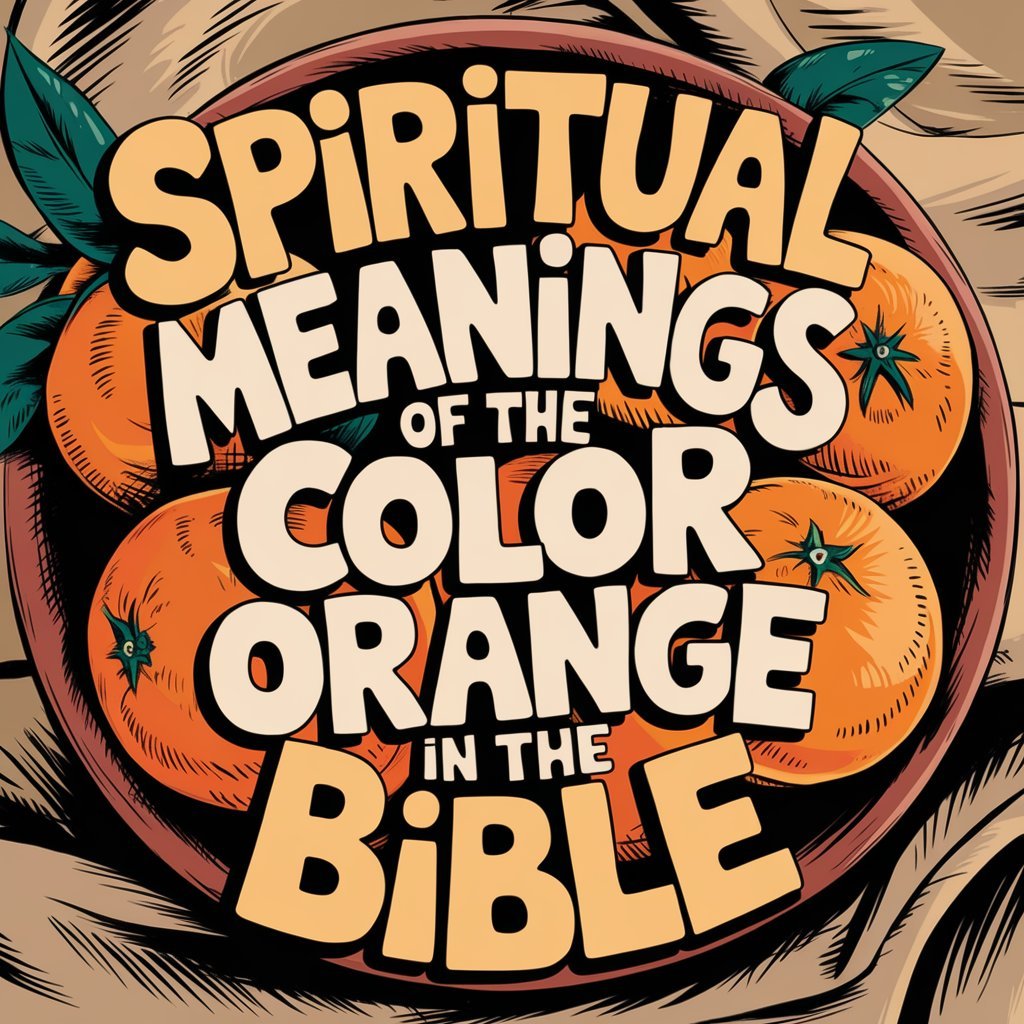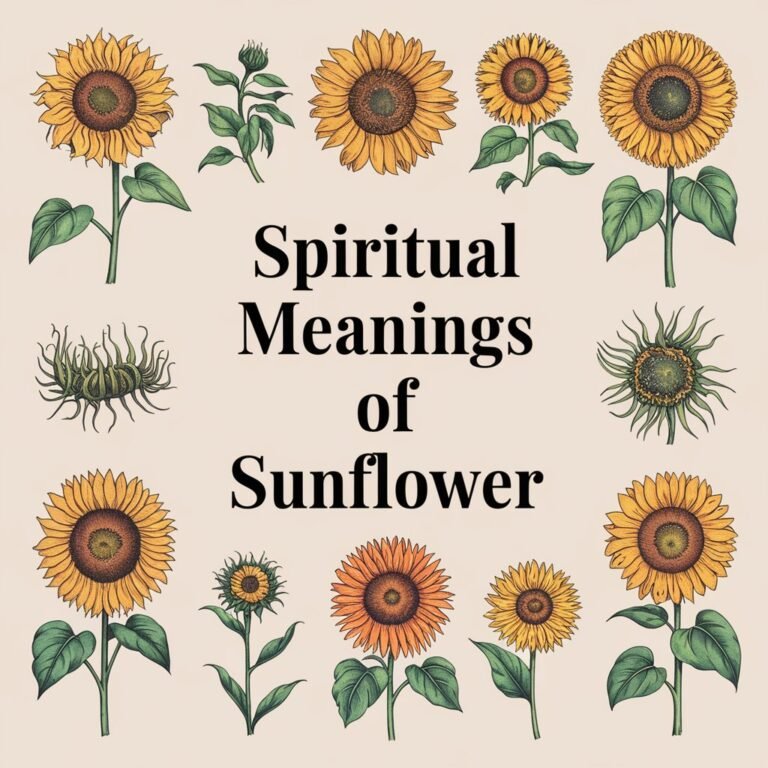15 Spiritual Meanings of the Color Orange in the Bible: A Comprehensive Guide
As you explore the rich symbolism in the Bible, you might be surprised to find that the color orange, often overlooked, holds significant meaning. Orange, as a blend of red and yellow, represents the dynamic fusion of divine love and glory.
You’ll discover that this vibrant color is woven throughout ancient artwork and Jewish tradition, conveying the sacrificial nature of God’s love and the connection between heaven and earth. But what exactly does this mean for your understanding of scripture and spiritual growth? The story of orange in the Bible is just beginning, and it’s about to reveal a depth of meaning you never knew existed.
Key Takeaways
- Orange, a fusion of red and yellow, represents the dynamic interplay between God’s love and glory in the Bible.
- In Scripture, orange symbolizes vibrant redemption, forgiveness, and the divine inspiration that fuels human creativity and innovation.
- As a bridge between heaven and earth, orange facilitates communication and connection with the divine, enabling spiritual growth and empowerment.
- Orange embodies the essence of artistic expression, innovation, and progress, reflecting the fusion of human passion and divine inspiration.
Red and Yellow in Scripture
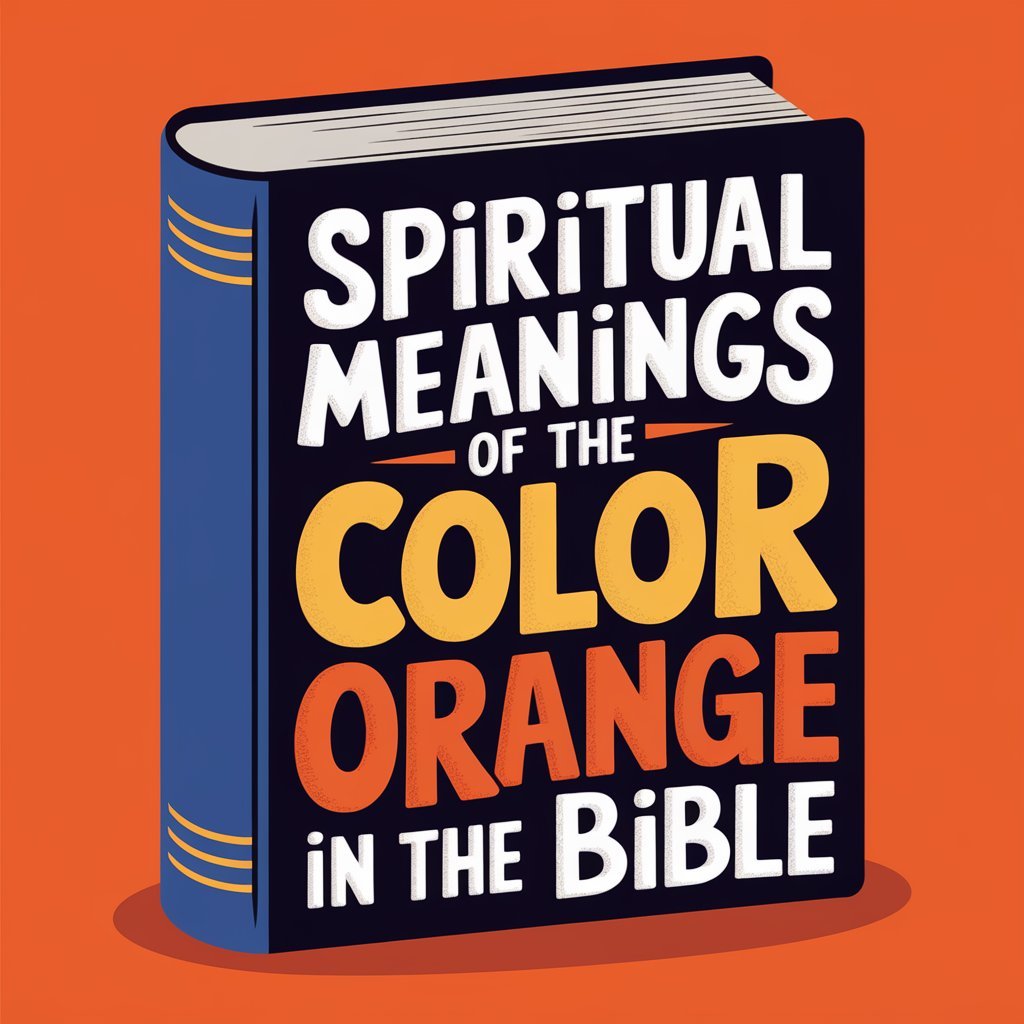
As you explore into the biblical narrative, you’ll notice that red and yellow, the constituent colors of orange, play distinct roles in Scripture, with red symbolizing passion, power, and sacrifice, while yellow represents wisdom, glory, and divinity.
This dichotomy creates a sense of color harmony, as the warmth of red complements the brightness of yellow.
The vibrant emotions evoked by these colors are palpable, drawing you into the heart of God’s message. Red’s intense energy stimulates your passion, while yellow’s radiance illuminates your understanding.
Together, they form a powerful synergy, reflecting the complexity and beauty of the divine.
As you plunge deeper, you’ll discover how this color harmony underscores the rich tapestry of biblical themes, inviting you to experience the freedom and joy that comes from embracing God’s multifaceted nature.
Sacrificial Symbolism of Red
The sacrificial symbolism of red is a profound and multifaceted theme that permeates the biblical narrative, weaving a rich tapestry of meaning and significance that underscores the very heart of God’s plan of redemption.
In the biblical context, red is a color that is inextricably linked with sacrifice, atonement, and the shedding of blood, which serves as a poignant reminder of the gravity of sin and the depth of God’s love. The use of red in the sacrificial rituals of the Old Testament, such as the sprinkling of blood on the altar, the doorposts, and the mercy seat, serves as a powerful symbol of the substitutionary atonement that would ultimately be fulfilled in the person of Jesus Christ.
The red color of the blood, which represents life and vitality, is poured out as a sacrifice to atone for the sins of humanity, demonstrating the immense cost of sin and the boundless love of God. Furthermore, the use of red in the priestly garments, such as the crimson thread and the scarlet yarn, serves as a visual reminder of the priest’s role as a mediator between God and humanity, and the need for atonement and forgiveness.
The sacrificial symbolism of red is also echoed in the prophetic language of the Bible, where the color red is used to describe the blood-stained garments of the Messiah, who would come to redeem humanity from the curse of sin. In the New Testament, the sacrificial symbolism of red is fulfilled in the person of Jesus Christ, who shed His own blood on the cross as a sacrifice for the sins of humanity, thereby providing a once-for-all atonement that would reconcile humanity to God.
Through the lens of the sacrificial symbolism of red, the Bible reveals the profound depth of God’s love and the immense cost of sin, while also pointing to the ultimate sacrifice that would bring about redemption and restoration to a fallen world.
Yellow’s Association With Glory
While the fiery passion of red reminds you of God’s sacrificial love, yellow’s radiant brightness illuminates the glory of His divine presence.
As you explore into the symbolism of yellow, you’ll discover its association with glory, majesty, and divine radiance.
In biblical contexts, yellow is often linked to Royal Majesty, signifying the supreme authority and power of God.
This vibrant color represents the splendor and brilliance of God’s presence, evoking feelings of awe and reverence.
Yellow’s association with glory also underscores God’s promise of eternal life and salvation, reminding you of the freedom and redemption offered through faith.
As you reflect on yellow’s significance, you’ll gain a deeper understanding of God’s divine nature and the majesty that surrounds Him.
Blending Colors for Biblical Insight
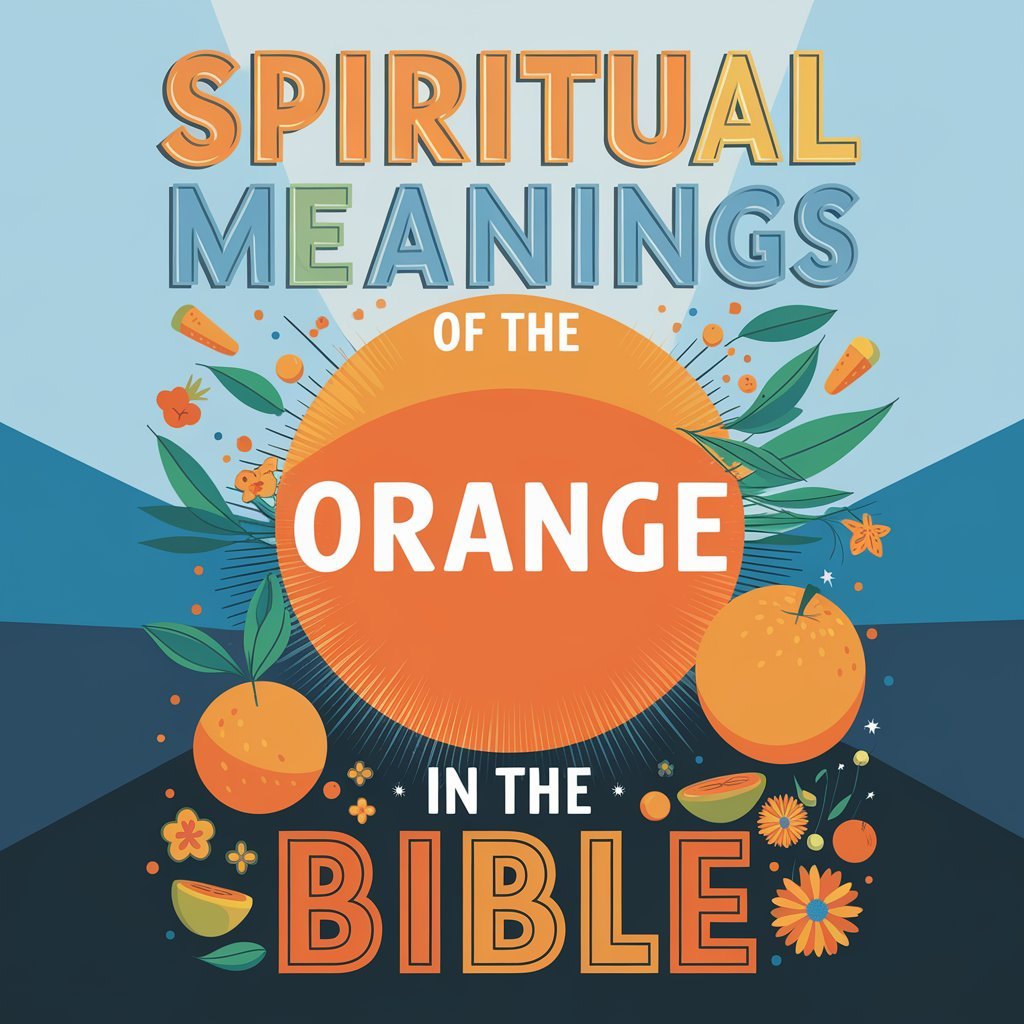
Blending colors for biblical insight is a fascinating and creative way to explore the rich symbolism and themes that permeate the biblical narrative. By combining different colors, we can gain a deeper understanding of the complex emotions, spiritual experiences, and divine revelations that are woven throughout the scriptures.
This process of blending colors can be likened to a form of artistic expression, where the colors are mixed and matched to create a new and unique hue that reveals a fresh perspective on the biblical text. As we blend colors, we can begin to see the intricate relationships between different themes and ideas, and how they intersect and overlap to create a rich tapestry of meaning.
For example, blending the colors red and orange creates a vibrant and energetic hue that represents passionate sacrifice, reminiscent of the sacrificial rituals of the Old Testament and the ultimate sacrifice of Jesus on the cross. Similarly, combining blue and purple creates a rich and majestic color that represents royal authority, evoking the robes worn by kings and high priests in the biblical narrative.
By blending colors in this way, we can gain a deeper understanding of the biblical themes and symbolism, and develop a more nuanced and multifaceted understanding of the scriptures. Furthermore, blending colors can also help us to identify patterns and connections between different biblical themes and ideas, and to see how they are woven together to create a cohesive and unified narrative.
Orange in Ancient Artwork
As you explore the symbolic significance of orange in biblical context, you’ll find that ancient artwork offers a rich tapestry of visual representations that reinforce its connection to divine love and glory.
In ancient times, artists used orange hues created from ancient pigments like ochre and cinnabar to convey a sense of vibrancy and energy.
This artistic expression was often used to depict divine beings, angels, and heavenly scenes, emphasizing the color’s association with the sacred and divine.
The use of orange in ancient artwork serves as a visual declaration to the color’s profound significance in biblical narrative, underscoring its role as a symbol of God’s love and glory.
Cultural Significance of Orange
Delving into the cultural significance of orange reveals a multifaceted narrative, where this vibrant color intersects with various traditions, symbolizing creativity, enthusiasm, and warmth in diverse contexts.
As you explore the cultural heritage of orange, you’ll discover its nuanced role in different societies.
In India, for instance, orange is a sacred color representing spiritual growth and enlightenment.
In Ireland, it’s associated with good luck and prosperity.
The orange nuance also plays a significant role in African cultures, where it symbolizes liveliness, energy, and fertility.
Symbolism in Modern Christian Art
In modern Christian art, the color orange emerges as a powerful symbol, often representing the passion and energy of faith, as artists strategically incorporate it to convey the intense emotions and spiritual struggles of biblical figures.
You’ll notice that contemporary trends in Christian art often feature orange to express the fiery passion of prophets, the fervent prayers of saints, or the dramatic conversions of sinners.
As you explore faith expressions through art, you’ll see how orange is used to capture the dynamic essence of spiritual experiences.
By doing so, artists invite you to engage with the emotional depth of biblical narratives, drawing you closer to the heart of the Christian faith.
Through orange, you’re encouraged to reflect on your own spiritual journey, igniting a deeper connection with the divine.
The Fusion of Divine and Human
You witness the fusion of divine and human in the Bible when orange is used to depict moments of profound spiritual connection, as if the veil between heaven and earth is lifted, revealing a glimpse of the divine nature within humanity.
This sacred synthesis is a powerful reminder of the interconnectedness of divine humanity. Through orange, you’re invited to experience the transcendent and the immanent, the eternal and the temporal, as one.
Orange symbolizes the union of heaven and earth, where the divine and human coexist in harmony.
It represents the sacred moments when humans access higher states of consciousness, transcending the mundane.
Orange is a bridge between the spiritual and material domains, connecting the infinite and the finite.
This fusion embodies the essence of divine humanity, where the sacred and the profane become one.
Representing the Holy Spirit
The Bible employs orange to symbolize the presence and power of the Holy Spirit, whose divine energy ignites faith, inspires wisdom, and kindles spiritual passion within believers.
As you explore into the scriptures, you’ll discover that orange represents the Spiritual Fire that purifies and transforms your heart.
This Holy Radiance illuminates your path, guiding you towards righteousness and truth.
The Holy Spirit’s presence is often depicted in orange hues, signifying His intense, all-consuming passion for your soul.
As you yield to His guidance, you’ll experience the warmth of His love, the clarity of His wisdom, and the empowerment of His grace.
Embrace the orange flame of the Holy Spirit, and let it set your spirit ablaze with purpose and freedom.
Orange in Biblical Prophecy
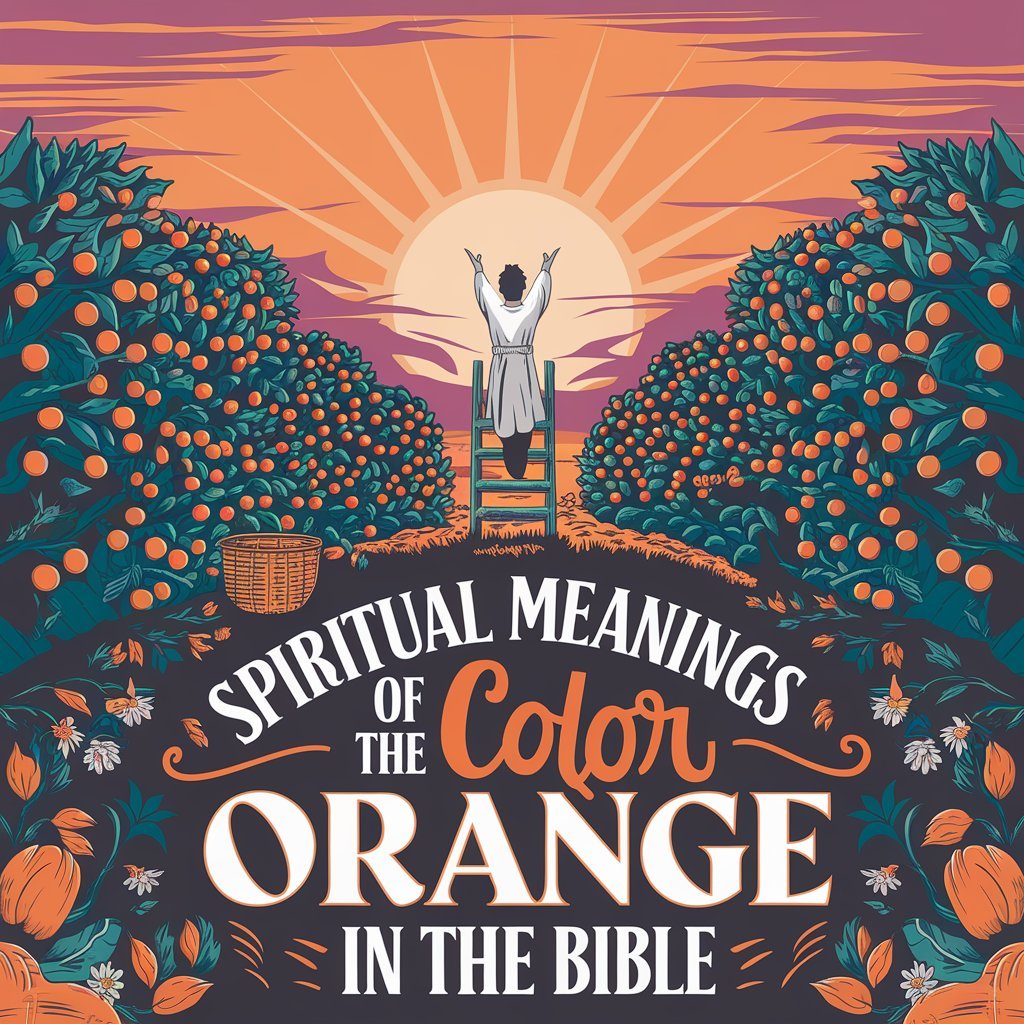
Biblical prophecy bursts forth with vibrant orange, signaling pivotal moments of divine intervention, judgment, and restoration, as God’s sovereignty intersects with human history.
As you explore into the prophetic domain, you’ll discover that orange symbolism is intricately woven into the fabric of God’s plan.
This vibrant color represents the fusion of divine justice and mercy, illuminating the path to redemption.
In Ezekiel’s vision, orange-hued wheels within wheels signify God’s omnipotence and judgment.
The prophet Isaiah describes the Lord’s glory as an orange-colored cloud, symbolizing divine presence and power.
Orange is also associated with the refining fire of God, purifying His people for their ultimate redemption.
In biblical prophecy, orange heralds a new era of restoration, where God’s justice and mercy converge to bring about ultimate freedom and redemption.
The Color of Creativity and Energy
As orange permeates the biblical narrative, it ignites a spark of creativity and energy, symbolizing the dynamic interplay between God’s inspiration and human innovation.
You begin to notice how orange hues evoke a sense of vibrant imagination, as if the divine breathes life into your creative pursuits.
This color represents the intersection of heaven and earth, where God’s creative inspiration meets human ingenuity.
As you explore further, you’ll discover how orange embodies the essence of artistic expression, innovation, and progress.
It’s the color of dreamers, inventors, and pioneers who dare to challenge the status quo.
With orange, you’re reminded that your creative potential is limitless, and that God’s inspiration is always available to guide and empower you.
Orange in Jewish Tradition
In Jewish tradition, you’ll find that orange is subtly woven into rituals and ceremonies, often symbolizing the quest for spiritual enlightenment and divine connection. This vibrant color isn’t just a decorative element, but a representation of the human soul’s aspiration for higher understanding and unity with the divine.
Orange is linked to the pomegranate, a fruit rich in symbolism, representing wisdom, fertility, and abundance.
In Rabbinic debates, orange is seen as a bridge between the physical and spiritual domains, echoing the Torah’s emphasis on balance and harmony.
The orange hues of the setting sun are reminiscent of the divine presence, inspiring a sense of awe and reverence.
Through its use in Jewish tradition, orange invites you to explore the depths of Torah interpretations, seeking a deeper understanding of the sacred texts and your own spiritual journey.
Atonement and Forgiveness Through Orange
Your spiritual journey through the nuances of orange in Jewish tradition now leads you to explore the profound connection between this vibrant color and the sacred themes of atonement and forgiveness.
In the biblical narrative, orange symbolizes vibrant redemption, underscoring the idea that forgiveness is a dynamic and transformative process.
The fruitfulness of orange also alludes to the fruitful sacrifice of Jesus Christ, who bore the weight of humanity’s sin, offering a path to redemption.
As you excavate deeper into the significance of orange, you’ll discover that it represents a powerful catalyst for spiritual growth, reminding you that forgiveness isn’t only a divine gift but also a personal choice.
Embracing the vibrant energy of orange, you’ll find freedom from the burdens of guilt and shame, unshackling a life of purpose and renewal.
The Bridge Between Heaven and Earth
Two domains, the heavenly and the earthly, converge through the symbolic significance of orange, which serves as a vibrant bridge facilitating communication and connection between the divine and human spheres.
As you explore the meaning of orange in the Bible, you’ll discover its role in bridging the gap between these two kingdoms. Orange represents a Heavenly Intermediary, connecting you with the divine.
Some key aspects of orange as a bridge between heaven and earth include:
- Facilitating Divine Connection, enabling you to communicate with the divine
- Symbolizing the union of spiritual and physical aspects of life
- Representing the harmony and balance that come from embracing both heavenly and earthly perspectives
Unpacking Orange in Spiritual Context
As you explore into the spiritual context of orange, its vibrant essence illuminates the intricate dance between human consciousness and divine presence.
You begin to realize that orange essence embodies the fusion of human passion and divine inspiration, awakening spiritual vibrancy within you.
This vibrant color resonates with the frequencies of creativity, enthusiasm, and joy, urging you to tap into your inner potential.
As you immerse yourself in the spiritual dimension of orange, you’re empowered to transcend limitations, break free from constraints, and access your true potential.
Frequently Asked Questions
Does the Bible Explicitly Mention the Color Orange?
You won’t find the color orange explicitly mentioned in the Bible, as it wasn’t a culturally significant term in the historical context of ancient civilizations; instead, they used descriptive phrases to convey vibrant hues.
Is Orange Associated With Any Specific Bible Characters?
You won’t find a specific Bible character directly associated with orange, but orange symbolism is linked to cultural associations like enthusiasm, creativity, and warmth, reflecting qualities embodied by energetic figures like Peter or John the Baptist.
How Does Orange Relate to Spiritual Warfare in Christianity?
You’ll find that orange isn’t explicitly linked to spiritual warfare in Christianity, but it can symbolize the spiritual armor you wear to combat demonic strongholds, as you seek to achieve freedom from Satan’s grasp.
Are There Any Orange-Dominant Bible Verses or Passages?
You won’t find orange-dominant Bible verses, but you’ll discover cultural significance in fruit symbolism, like oranges representing abundance and joy, which can be applied to spiritual warfare, emphasizing the importance of spiritual nourishment in your fight for freedom.
Can Orange Be Used in Worship or Prayer Practices?
You can harness orange’s cultural significance to craft a vibrant atmosphere in worship or prayer practices, evoking enthusiasm and warmth, but be mindful of its potential to distract from spiritual focus, ensuring a balanced approach.
Conclusion
As you’ve explored the biblical significance of orange, you’ve uncovered a rich tapestry of symbolism.
This vibrant color represents the intersection of divine love and glory, embodying the sacrificial nature of God’s love.
Through its fusion of red and yellow, orange bridges heaven and earth, inspiring imagination, innovation, and spiritual growth.
In ancient artwork and Jewish tradition, orange declares God’s profound love and glory, inviting you to deepen your connection with the divine.

Liza Stockholm is an esteemed spiritual guide and the visionary behind Spiritual with Liza. With a profound passion for empowering others on their spiritual journey, Liza offers a blend of educational content and personal guidance. Her expertise in spirituality is rooted in years of dedicated practice and study, making her a trusted companion for those seeking enlightenment and inner peace.

